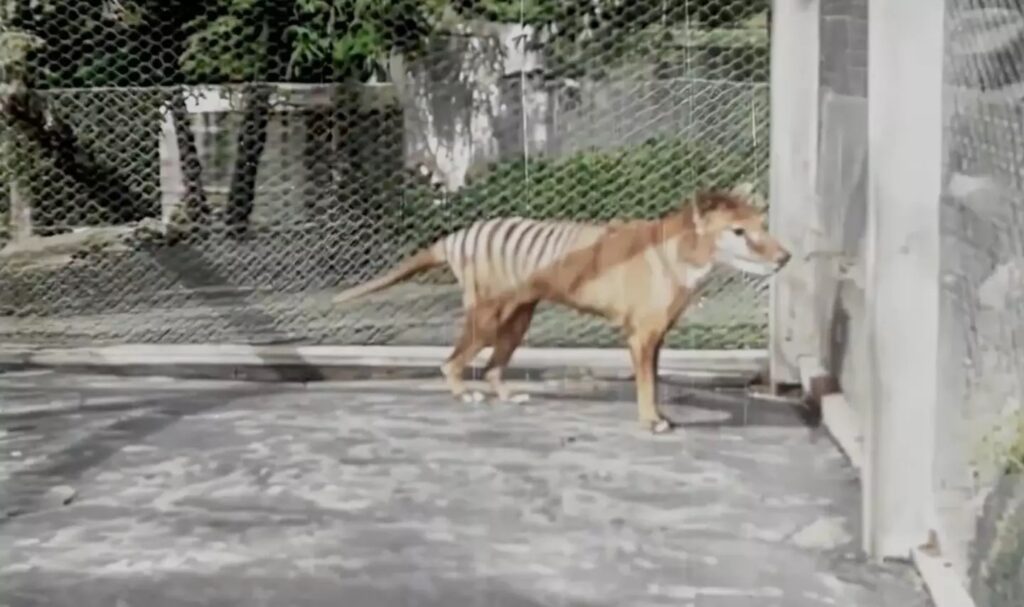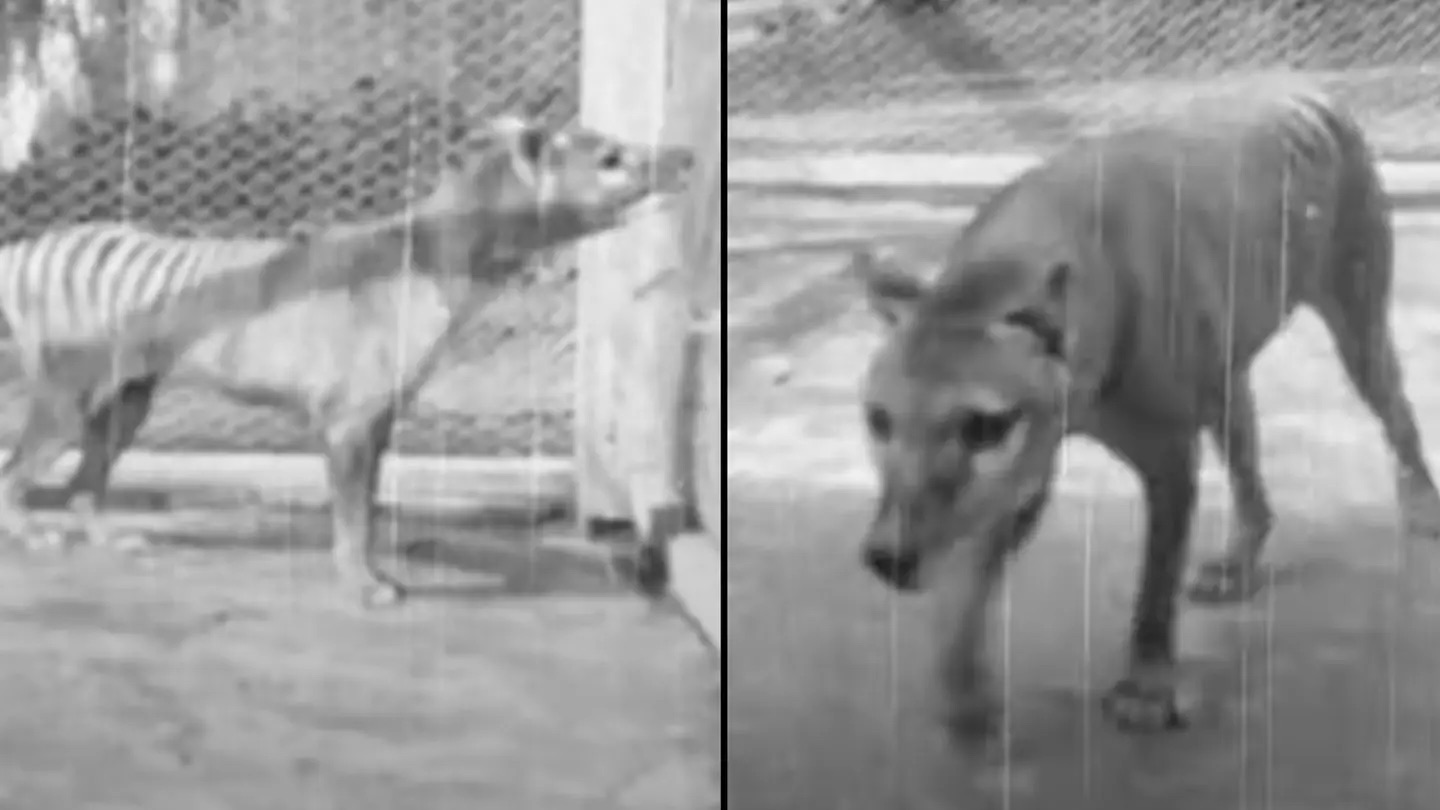Experts believe that an extinct apex predator, the thylacine, also known as the Tasmanian Tiger, could be brought back to life using advances in biotechnology. This wolf-like marsupial, declared extinct nearly 40 years ago, last lived in captivity, with the final known individual, named Benjamin, dying between 1895 and 1937 in a Tasmanian zoo.
Eighty-three years after the closure of Hobart Zoo, Australia’s National Film and Sound Archive released restored footage of the thylacine. Originally part of a 1935 travelogue, Tasmania the Wonderland, the 21-second clip, now colorized, shows Benjamin pacing in an enclosure as a narrator describes the creature’s distinct features, including its striped tail, and calls it a “dangerous opponent.” Benjamin passed away 18 months after the footage was filmed.

Thylacines once roamed the Australian mainland but were isolated in Tasmania around 3,000 years ago. Hunted extensively due to their threat to livestock, they were driven to extinction, with additional pressures from the introduction of dingoes and climate change.
Now, scientists think they might revive the species. Colossal Biosciences, a Dallas-based firm, considers the thylacine an ideal candidate for “de-extinction,” as reported by Sky News. With $235 million (£180.7 million) in funding, the company is using advanced genetic engineering to support research in 13 global laboratories.

Meanwhile, researchers in Melbourne recently discovered a preserved thylacine skull, found in a bucket of ethanol in a museum storage room. Professor Andrew Pask, who leads the genetic restoration project at the University of Melbourne, called the discovery a “miracle” because it contains RNA molecules crucial for reconstructing the thylacine’s genome.
“With this new resource, we can explore the thylacine’s senses and brain functions,” Pask said, adding that the team is making faster progress on the de-extinction effort than expected. “We have completed many tasks that were once thought impossible,” he noted.
Earlier attempts to reconstruct extinct species’ DNA failed due to its natural decay over time. However, the current success with the thylacine project offers hope that it could be revived. Pask emphasized that the genome will help ensure what is brought back is a true thylacine, not a hybrid.
Though the outcome remains uncertain, Colossal Biosciences also aims to resurrect other extinct species, including the dodo and woolly mammoth.
